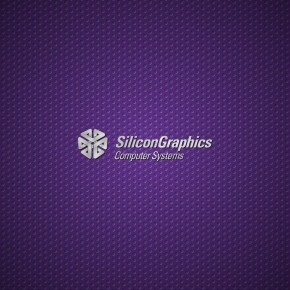In the ’90s, Silicon Graphics was nothing short of synonymous with cutting edge technology. No other company even came close.
Between 1995 and 2002, every single film that was nominated for an Academy Award for Distinguished Achievement in Visual Effects was created with workstations made by Silicon Graphics. All of them. For eight straight years.
And you wouldn’t just find SGI behind the scenes in Hollywood. Silicon Graphics computer systems were featured prominently in numerous films, including a Silicon Graphics laptop that appeared in Twister (in spite of the fact that SGI never actually made a laptop). These weren’t paid product placements either. Filmmakers really wanted SGI systems in their films because they looked awesome, and gave their films serious geek credibility.
But as it goes with all technology, SGI’s most popular products were eventually eclipsed by newer and less expensive technologies from Apple, Intel, AMD, and dozens of other ambitious and aggressive tech companies. SGI is still around and they still make high-end computer systems, but you probably won’t run into one unless you’re a meteorologist or you happen to work for NASA.
So, as a tribute to the golden age of Hollywood’s (and my) favorite desktop supercomputers, I created these colorful Silicon Graphics HD wallpapers. There are several variations in different colors and with different logo styles. I hope you enjoy them all.
Comments
Powered by Facebook Comments






I believe your site is broken. I keep getting the “hotlinking” cat whenever I try to download the wallpaper. The blue one with the text caught my fancy – very nice.
I recently got out my Octane with the intention of wiping it and either selling or recycling it. The last time I had logged into it was in April 2004.
There is something fairly magical about them though, truly a relic of bygone era. The days of proprietary connectors, serial consoles, bootp/tftp/rsh network installs, UNIX systems that did things their own way, quaint out-of-box security… A little bit of pain, but a whole lot of history.
Anyway, wound up reinstalling the machine and brought it up to 6.5.22m and loaded it with a mix of apps and freeware. Unfortunately, using it rekindles an old flame.. I might have to hold on to it, at least while it still draws breath. 🙂
It’s too bad SGI wasn’t able to stick around with the presence they had. Just another mark for the “tough to adapt from core legacy business” statistic, I suppose.
Hmm, it looks like the hotlink kitty got cached by our CDN so even legitimate visitors were seeing it. It should be ok now, but please let me know if you still see the hotlink kitty after reloading the page.
Personally, I’ve been tempted to pick up an old SGI 330 and drop in a modern motherboard and a Core i7, just to have an SGI on my desktop. Not enough patience for IRIX I’m afraid, and I just don’t have much use for a UNIX box these days.
But yeah, magical is the perfect word for SGI. It was the nerd version of owning a Lamborghini (which I guess made Sun the nerd version of Ferrari). I would love to see SGI launch a new desktop workstation line. I’d buy one.
Woot, yeah, works now. Thanks!
That’s a pretty good idea building into one of their more standardized form factor cases. I hadn’t even considered that with a 330. Would expect it to be a bit easier than modding an O2 or Octane.
It’s sad, but IRIX is largely relegated to legacy apps, infrastructure that hasn’t yet been ported away, and novelty. Most of the freeware stopped getting maintained in the mid-2000s. Amazingly, IRIX 6.5 will be supported until Dec 2013. It’s been binary-compatible for all of 6.5 which was released in 1998. According to Wikipedia, since 2006 they’ve been shipping with RHEL or SuSE Linux. Currently though, the only UNIX system that has desktop superiority similar to SGI’s in the 90s is Apple’s Mac OS X which does make sense given OS X’s NeXT roots. They had people that understood UNIX workstations.
Of course these days Apple is more focused these days on their more profitable ventures and tying those things in nicely and idiot-proofing things to a fault, trying to hide parts of the system from the user. SGI / IRIX weren’t afraid to mix copious amounts each of geekery, power, and sleekness (in its time) in one platform.
If you haven’t already found his site, you should definitely visit http://www.jarredcapellman.com
He’s got dozens of SGI related posts, most of which document various machines he’s built or repaired. In fact he confirmed that the VS 330 chassis will accept a standard ATX board, having converted one himself.
nice wps, thank you :=)